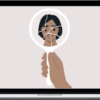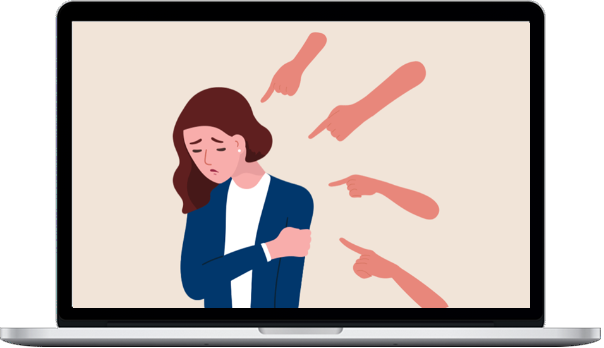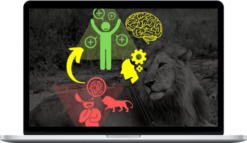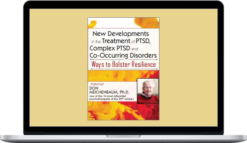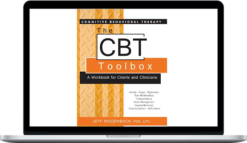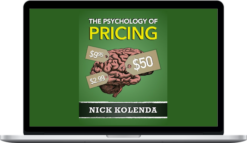NICABM – How to Ease the Pain of Trauma-Induced Shame
$197.00 $89.00
»Delivery: Within 21 days
Description
NICABM – How to Ease the Pain of Trauma-Induced Shame
Practical Strategies to Help You Treat Shame with Greater Skill and Efficacy
When it comes to treating trauma, shame is often the last and most difficult issue for clients to resolve.
That’s because it can spawn an unrelenting inner-critic and leave clients feeling like they’re bad or even “poisonous” at a core level – a challenging combination that can render many of our trauma interventions ineffective.
So to help clients release the painful weight of trauma-induced shame, we need to:
- Understand the neurobiological factors that allow shame to flourish in the aftermath of trauma
- Address the subtle and hidden ways that shame can present
- Overcome the barriers that can prevent clients (and sometimes practitioners) from working through shame
- Implement approaches that can help clients safely process shame (without inadvertently reinforcing it)
That’s why we brought together 16 of the world’s top experts to get their best strategies for helping clients overcome deeply ingrained feelings of shame that stem from trauma.
What You’ll Learn In How to Ease the Pain of Trauma-Induced Shame
How to Ease the Pain of Trauma-Induced Shame
Expert Approaches to Help Clients Process Shame in a Safe and Healthy Way
Bessel van der Kolk, MD Peter Levine, PhD Stephen Porges, PhD
Janina Fisher, PhD Pat Ogden, PhD Deb Dana, LCSW
Martha Sweezy, PhD, LICSW
- A Polyvagal Approach to Working with Shame
- Working with Shameful Parts from an Internal Family Systems Perspective
- Body-Based Exercises That Can Help Clients Who Struggle to Verbalize Shame
- How to Help Clients Uncover Impulses Buried Underneath Shame
- One Powerful Way to Normalize a Client’s Experience of Shame
Strategies to Skillfully Detect Trauma-Induced Shame
Thema Bryant, PhD Pat Ogden, PhD Kathy Steele, MN, CS
- How to Recognize Shame Even When Clients Don’t Think It’s a Problem
- Four Defenses Clients Use to Manage Shame
- How Shame Can Appear in a Client’s Relationship Patterns
- Specific Behaviors That Can Indicate the Presence of Shame
- How Shame Can Disguise Itself as Self-Sabotage
The Neurobiology of Trauma-Induced Shame
Bessel van der Kolk, MD Peter Levine, PhD Janina Fisher, PhD
Pat Ogden, PhD Kathy Steele, MN, CS Thema Bryant, PhD
Martha Sweezy, PhD, LICSW
- An Important First Step to Treating Shame
- Recent Findings on the Neurobiology of Shame
- Two Factors That Make Shame Especially Debilitating (and Difficult to Treat)
- The Protective Purpose of Shame – and How That Can Impact Treatment
How to Work with Trauma-Induced Shame That Leads to Self-Harm
Ruth Lanius, MD, PhD Pat Ogden, PhD
Janina Fisher, PhD Deb Dana, LCSW
- How to Pinpoint a Client’s Urge to Self-Harm
- A Subtle Form of Self-Harm (and How to Work with It)
- How to Help Clients Manage Their Urge to Self-Harm
- Strategies to Overcome the Challenges of Working with a Client Who Self-Harms
Common Mistakes That Can Derail Treatment
Bessel van der Kolk, MD Janina Fisher, PhD Richard Schwartz, PhD
Thema Bryant, PhD Kathy Steele, MN, CS Martha Sweezy, PhD, LICSW
- How Cognitive Approaches to Shame Can Backfire (and What to Try Instead)
- Why a Client’s Trauma History Can Distract from Treatment
- One Counterintuitive Goal of Treating Shame
- Why Helping Clients Practice Self-Forgiveness Can Sometimes Deepen Shame
How to Work with the Shame of Moral Injury
William Nash, MD Bessel van der Kolk, MD Pat Ogden, PhD
Janina Fisher, PhD Deb Dana, LCSW Ruth Lanius, MD, PhD
- Why Moral Injury Can Lead to Debilitating Shame
- Strategies to Help Clients Reconcile Past Actions and Begin to Move Forward
- Why Some Clients Are Triggered by Positive Emotions (and How to Safely Help Clients Experience Them)
- Specific Factors That Make Some Clients More Susceptible to Moral Injury
About NICABM
We proudly provide continuing education for practitioners who are dedicated to being the best in their craft. Our goal is to develop programs that connect you with the top experts and the latest strategies in the field, to help you achieve better outcomes, more quickly with each of your clients.
More courses from the same author: NICABM
Delivery Policy
When will I receive my course?
You will receive a link to download your course immediately or within 1 to 21 days. It depends on the product you buy, so please read the short description of the product carefully before making a purchase.
How is my course delivered?
We share courses through Google Drive, so once your order is complete, you'll receive an invitation to view the course in your email.
To avoid any delay in delivery, please provide a Google mail and enter your email address correctly in the Checkout Page.
In case you submit a wrong email address, please contact us to resend the course to the correct email.
How do I check status of my order?
Please log in to HealingCourse account then go to Order Page. You will find all your orders includes number, date, status and total price.
If the status is Processing: Your course is being uploaded. Please be patient and wait for us to complete your order. If your order has multiple courses and one of them has not been updated with the download link, the status of the order is also Processing.
If the status is Completed: Your course is ready for immediate download. Click "VIEW" to view details and download the course.
Where can I find my course?
Once your order is complete, a link to download the course will automatically be sent to your email.
You can also get the download link by logging into your HealingCourse account then going to Downloads Page.
Related products
Total sold: 3
Total sold: 2
Total sold: 4
